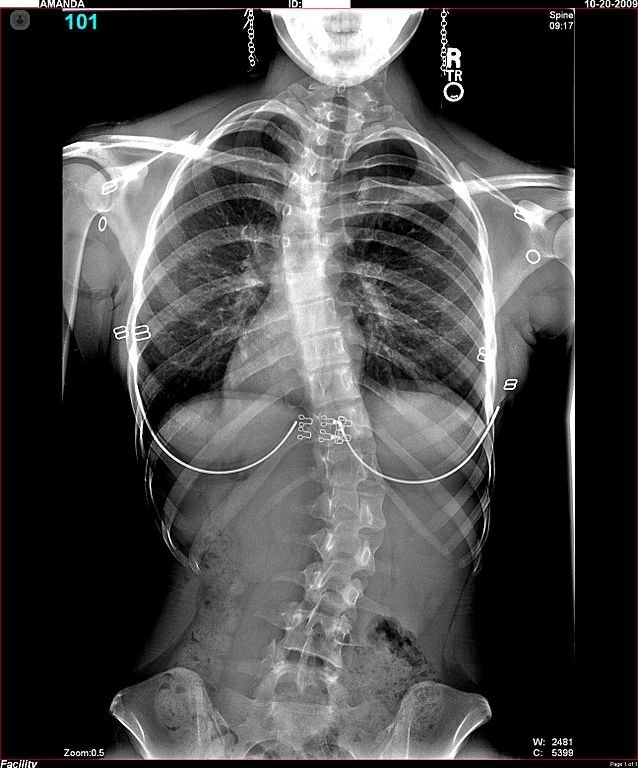Scoliosis, how to detect the problem in children?
Written by:
What is scoliosis?
Scoliosis is a deformity of the spine resulting in a curve in the frontal plane and in the side (s D). It is accompanied by rotation of the vertebrae which are located in the area of the curve.

One of the features of this deformity is often progresses during the growth stage and is likely to cause large deviations. Fortunately, only 10% of patients develop high degree curves.
While it may appear at any age, 85% of scoliosis occurs in adolescence, being more common in girls.
What are the symptoms of scoliosis in children and adolescents?
The deformity aesthetic alteration which is proportional to its degree. Small curves may go unnoticed and cause an identifiable curves greater when we look back deformity of the child.
Scoliosis is usually not painful and therefore sometimes not diagnosed until the aesthetic alteration is very striking. The fourth part of patients, can produce feeling muscle fatigue and back, only high magnitude scoliosis curve, can produce more marked discomfort.
What parents need to be fixed?
Parents should look at the back of the boy or girl does not present asymmetries in detail, more outputs a scapula other or higher than the other shoulder.
Due to the rotation of the vertebrae in scoliosis, when the child leans forward, a prominence of the spine to one side, called hump clearly appears. Their presence is indicative of scoliosis.
How is scoliosis treated?
Throughout the history of medicine, scoliosis was treated with exercises, stretching, appliances, electrical stimulation, etc.. None of these treatments has been shown to decrease the degree of deviation. Today we know that we can only stop it from getting worse and to this end, called external support brace is placed.
Furthermore, treatment of trauma of scoliosis depends on the degree of deformity and the degree of skeletal maturation patient.
Below 30 degrees controls should take place every 3-6 months until skeletal maturity, to see whether other treatment evolves and accurate. 90% of scoliosis never exceed 30 degrees.
Around 30 degrees in a child with low bone maturation, we closely monitor the evolution that has great potential to worsen. Doing so will put a brace to stop if possible evolution. If the child is already at the end of the bone maturation (girls aged 13-14 years and children aged 15-16 years) is not necessary to place the curve corset because not evolve significantly.
In severe curves, 50th above is indicated surgical correction of the deformity.
What cases of scoliosis intervention is necessary?
Surgical correction of scoliosis is indicated in deformities above 50 degrees. The reasons are basically two. The first is that as of this magnitude, there is a higher incidence of back pain and diminishes the quality of life of patients. The second is that, above this magnitude, there is a progressive worsening deviation along life.
Scoliosis means operate to minimize the bend and fix the vertebrae in that position. To do this, we place a metal anchoring systems and bone graft fill all the operated area.
With the operation a column got much less deformity, but in return all the operated segment will be rigid and not have mobility.


